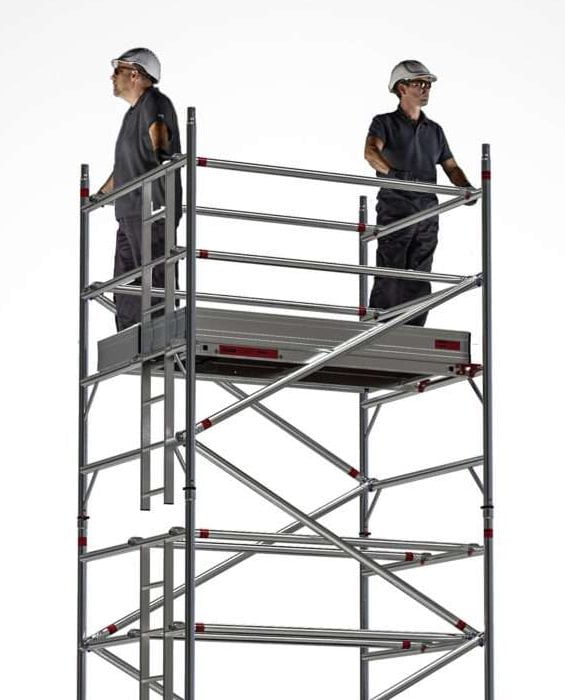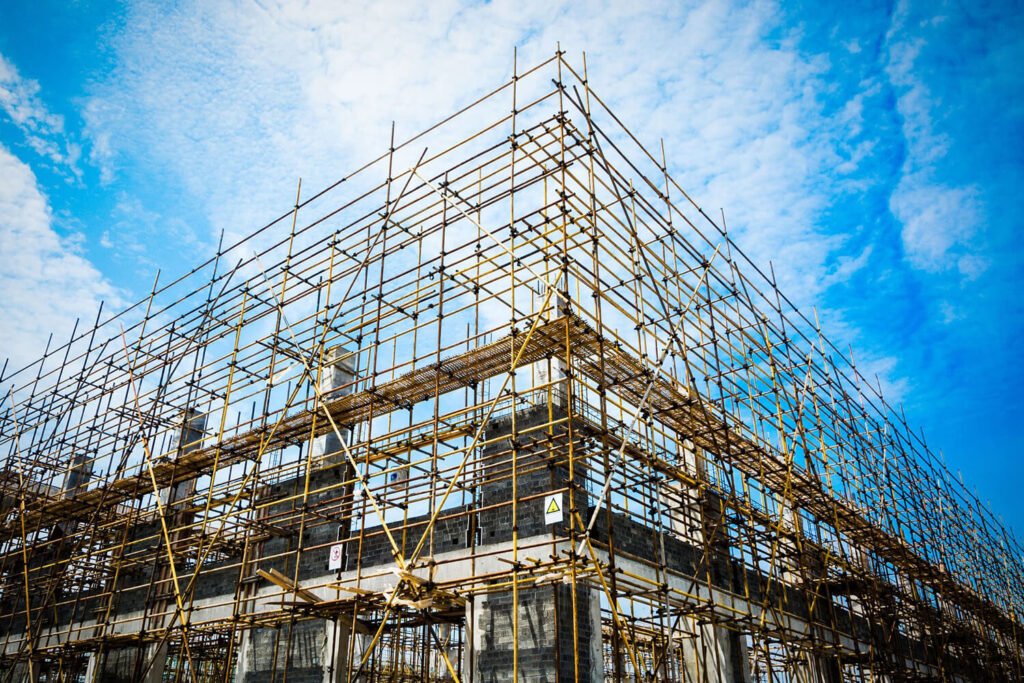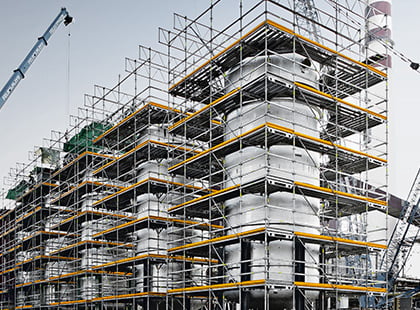Choosing a Local Scaffolding Company for Reliable and Timely Service
Choosing a Local Scaffolding Company for Reliable and Timely Service
Blog Article
Exploring the Different Types of Scaffolding Used in Building And Construction Jobs
The construction industry counts greatly on different types of scaffolding to fulfill details task needs, each offering distinct advantages and applications. Traditional structure scaffolding offers a sturdy foundation for general tasks, while put on hold scaffolding is necessary for job on high-rise frameworks.

Conventional Frame Scaffolding
Typical structure scaffolding is just one of one of the most widely utilized methods in the building and construction sector as a result of its effectiveness and convenience. This system contains upright and straight frames that are set up to create a stable system for workers and products. The main components consist of vertical articles, horizontal journals, and angled braces, which together give a strong framework that can support substantial tons.
One of the key advantages of standard frame scaffolding is its adaptability to numerous construction tasks, ranging from household buildings to huge commercial frameworks. The modular layout enables simple assembly and disassembly, making it efficient for both short-term and lasting projects. Furthermore, the system can be personalized in height and width, fitting different building designs and site conditions.
Safety is critical in scaffolding applications, and standard framework systems are outfitted with guardrails and toe boards to stop drops and make certain employee security. In addition, normal examinations and adherence to safety and security laws are essential in maintaining the honesty of the scaffold. Overall, typical frame scaffolding continues to be a fundamental choice in the construction sector, offering a trusted system for labor and improving overall job effectiveness

Suspended Scaffolding
Suspended scaffolding uses a distinct remedy for building and construction projects that call for accessibility to raised surfaces, specifically in scenarios where traditional frame scaffolding might be not practical. This type of scaffolding is generally suspended from the roofing or upper degrees of a structure, making use of a system of platforms, ropes, and wheels to create a functioning space that can be gotten used to numerous heights.
One of the main benefits of put on hold scaffolding is its versatility. It can be conveniently rearranged or lowered to fit modifications in building and construction needs, making it suitable for tasks such as window installment, frontage job, and upkeep on skyscrapers. Additionally, the minimal impact of suspended scaffolding permits much better usage of ground space in urban settings, where area is commonly limited.
Security is a crucial consideration in making use of suspended scaffolding. Proper rigging and securing systems need to be used to guarantee stability and prevent crashes. Operators should likewise be learnt the safe use this equipment. In general, put on hold scaffolding supplies a reliable and reliable solution for accessing hard-to-reach areas in different building and construction scenarios, boosting both productivity and safety and security on website.
System Scaffolding
System scaffolding, often considered a modern solution in the scaffolding industry, is composed of pre-engineered components that can be quickly set up and adjusted for different construction tasks. Scaffolding. This type of scaffolding is characterized by its modular design, which permits convenience and performance on job websites, suiting structural demands and different elevations
Usually made from high-strength steel or light weight aluminum, system scaffolding uses improved toughness and stability. The elements consist of upright messages, straight journals, and angled dental braces, which adjoin securely, making certain a robust structure. The layout frequently integrates standardized installations, streamlining assembly and disassembly processes, therefore lowering labor time and prices.

Rolling Scaffolding
Moving scaffolding is a flexible choice to standard fixed scaffolding, created for flexibility and convenience of usage on building and construction sites. This sort of scaffolding contains a system sustained by frames with wheels, enabling workers to quickly transfer it as needed. The movement attribute considerably improves performance, as it minimizes downtime connected with setting up and disassembling dealt with scaffolding.
Commonly created from lightweight products such as aluminum or steel, rolling scaffolding uses a tough yet portable service for jobs needing regular repositioning - Scaffolding. It is specifically advantageous in jobs such as painting, drywall setup, and electrical work, where access to various elevations and areas is required
Safety is critical in rolling scaffolding design, with functions such as locking wheels to prevent unplanned motion when being used, and guardrails to protect workers from drops. Furthermore, lots of versions are flexible in height, suiting different job demands.
Cantilever Scaffolding

The design of cantilever scaffolding normally entails using arms or braces anchored to a building or structure, enabling the system to expand exterior safely. Safety is extremely important; therefore, these scaffolds should be crafted to withstand ecological conditions and various loads. Normal inspection and upkeep are necessary to make sure structural stability and worker safety and security.
Cantilever scaffolding is favored for its convenience and effective usage of area, making it a preferred choice in city atmospheres where space constraints prevail. It facilitates easier accessibility to high altitudes, inevitably contributing to the total efficiency of construction jobs. As with all scaffolding kinds, appropriate training and adherence to safety and security criteria are crucial for workers making use of cantilever scaffolding.
Verdict
Standard structure scaffolding supplies security, while put on hold scaffolding supplies versatility for elevated jobs. System scaffolding promotes fast assembly, and rolling scaffolding improves wheelchair for differing job settings.
Conventional frame scaffolding gives a tough structure for basic jobs, while suspended scaffolding is crucial for job on skyscraper structures.Moving scaffolding is a flexible choice to traditional set scaffolding, made for flexibility and convenience of usage on building websites. As with all scaffolding kinds, this page appropriate training top article and adherence to safety requirements are crucial for workers making use of cantilever scaffolding.
Traditional frame scaffolding provides stability, while put on hold scaffolding uses flexibility for elevated jobs. System scaffolding facilitates fast setting up, and rolling scaffolding enhances flexibility for differing work settings.
Report this page